17 churches offer fascinating history of the Methodist Church
in Indianapolis
This is a brief history of the Methodist church as it has grown in Indianapolis. Rather than covering the beliefs of the Methodist church, it focuses on the different types of Methodist church buildings and styles of Methodist church architecture and growth of the Methodist denomination in Indianapolis.
In addition to white and English-speaking Methodist churches, German Methodist and Black Methodist denominations are investigated. While focusing mostly on Methodist history in Indy, an attempt has been made to discuss conditions up to and after the impending split in the Methodist church.
By Lee R. Little, JD, MLS
Historiographer of the Episcopal Diocese of Indianapolis
In this article, we’ll delve into the history of the Methodist church in Indianapolis, often claimed as the first Christian denomination to be established in the city. The product of efforts of English brothers John and Charles Wesley and their companions at Oxford University, Methodism began as a revivalist and reform movement in the Church of England during the First Great Awakening.
The name itself comes from the strict “method” of life and practice laid down by the Wesleys as the central Methodist church beliefs, in their 25 Articles of Religion.
Both Wesleys were ordained priests in the Church of England and wanted their followers to remain in communion with the established hierarchy.
However, after their deaths, their followers found themselves at odds with the religious authorities and formed a new denomination, known as the Methodist Episcopal Church (commonly shortened to “ME”), indicating adherence to the Wesley’s Method of faithful living and episcopal leadership, meaning a church governed by bishops.
Early Methodists in the United States were incredibly successful in their efforts to spread the Gospel to the furthest-flung reaches of the new and mushrooming country.
The success was in large part a combination of a loose leadership hierarchy, emphasis on personal holiness through prayer and scripture study, and a reliance on a system of itinerant missionaries called circuit riders. These circuit riders took very seriously the command of Jesus in Mark 6:8-9:
“These were his instructions: “Take nothing for the journey except a staff—no bread, no bag, no money in your belts. Wear sandals but not an extra shirt.”
They traveled through the wilderness, visiting new settlements and preaching the Good News from horseback and returning on a regular but infrequent basis until the congregation was large enough to sustain a more permanent minister.
Other denominations related to the teachings of the Brothers Wesley are prominent in Indianapolis, including Methodist Protestant, Free Methodists, Holiness/Pilgrim Holiness, Wesleyan, and Nazarenes among others. These are unique enough in their history and development to warrant their own article – be on the lookout for that in the future!
History of the Methodist Church in Indy/Marion County
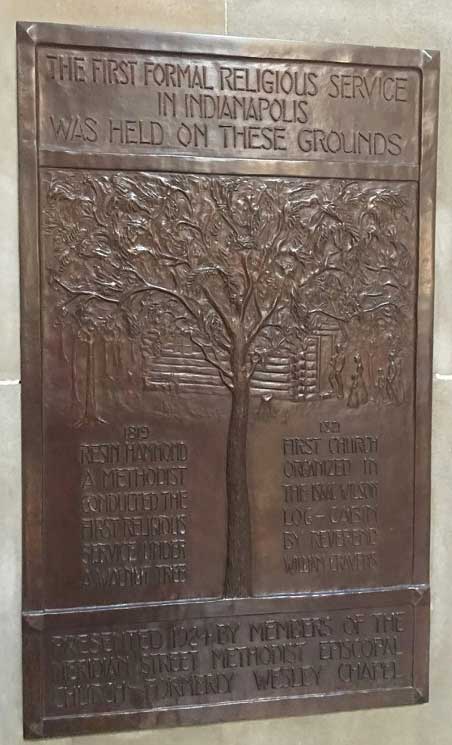 Indiana was very much on the frontier until the Civil War and as its capital city, Indianapolis was a focus of missionary activity.
Indiana was very much on the frontier until the Civil War and as its capital city, Indianapolis was a focus of missionary activity.
A plaque in the statehouse rotunda commemorates the location of the first Christian sermon and the start of the history of the Methodist church in the city, given in 1819 by Rev. Resin Hammond of Clarksville, Indiana.
A class (as Methodist congregations were then known) on a circuit (staffed by the aforementioned circuit rider) was first established in Indianapolis at Isaac Wilson’s cabin in 1821. Wilson, a veteran of the Revolution, was an 1820 arrival to Indianapolis and built the first permanent house within the original Mile Square plat and also the first mill.
The cabin is long gone, but a marker notes the location of his grave – he refused to be buried in the city’s original cemetery for fear that his bones would be washed away in a flood and was instead interred in his front yard.
The first named Methodist minister was Rev. William Cravens from Missouri, who was sent by his state’s Conference to establish a circuit and station in the city. He and a small number of other preachers would remain in relative itineracy until 1828, when a permanent charge was established for Indianapolis and a full-time preacher was stationed here.
Among those early clergy were Revs. Edwin Ray and John Strange, who would eventually give their names to congregations in various parts of the growing city.
A permanent chapel was built for the small but growing congregation in 1825. This original log cabin served their purposes until 1829, when a newer and larger structure was built at the southwest quadrant of Monument Circle, which stood until 1846. This second church stood until its walls cracked and a larger structure was built on the same lot.
Google map of the Indy churches
Here’s some help with visualizing the locations of the Methodist churches.

Sketch of the second Wesley Chapel (1829-1846)

Circle City Congregations
For more information about the early history of Indianapolis, please refer to my last article, which set the stage for how the city developed.
Expansion
The city and its white Methodists had expanded enough by the 1840s that new congregations began to form.
As many organisms that reproduce by budding do, the city’s white Methodist congregations began to expand at an exponential rate. Records from Depauw University’s Indiana Methodist archives indicate that there have been around 200 Methodist or United Brethren congregations in and around Indianapolis since Wesley Chapel was first established two centuries ago.
The first division occurred in 1842, when the original congregation split into eastern and western charges, known as Roberts Chapel and Wesley Chapel, respectively; Strange Chapel spun off of Wesley Chapel in 1845 to minister to members living west of the canal. Of particular note are the initial two congregations, Wesley and Roberts Chapels.
Meridian Street Methodist
Wesley Chapel moved from its original building on Monument Circle in 1869 to the corner of New York and Meridian Streets, which is now occupied by the Federal Courthouse. Along with the move came a new name: Meridian Street Methodist. The 1869 church was destroyed by fire in 1904.
They moved to the corner of St Clair and Meridian Streets. This building is a magnificent example of Gothic Revival architecture and was designed by local architect DA Bohlen.
The congregation eventually left this structure in 1946 as part of the first wave of White Flight to hit Indianapolis. Their present building was constructed at 55th & Meridian Streets in a well-to-do neighborhood in the Neofederalist style, arguably the most impressive iteration of the style in the city.
Meridian Street Methodist (1869-1904)
Fire at Meridian Street Methodist (November 17, 1904)
Meridian (1906-1946), now condos
Current Meridian Street Methodist (1946-present)
Roberts Park Methodist
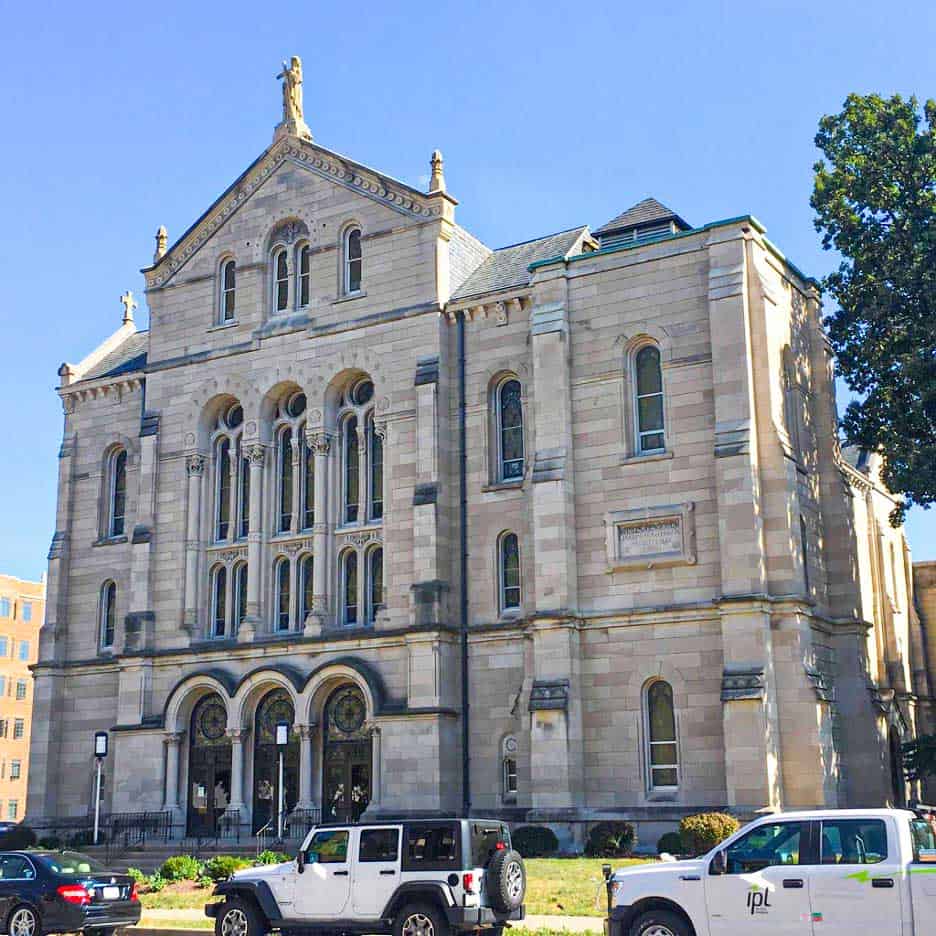
1876 to present
Roberts Chapel was renamed in 1843 after Bishop Robert R Roberts, who was in charge of the Indiana Conference in 1842 and died in the year of renaming.
Upon purchase and building at its current lot, the name was changed to Roberts Park to reflect the idyllic nature of the property. Their current building dates to the 1870s and is a stunning example of Rundbogenstil, again by DA Bohlen. A German variant of Romanesque Revival, Rundbogenstil reflects Bohlen’s country of origin and his ability to effectively mimic famous buildings of the time; Roberts Park is said to resemble London’s City Temple, which dates to the same time period.
pre-1869 photograph
This picture hangs in the history room of the current church

Methodist Hospital
In 1899, the Methodist Episcopal congregations of the city banded together to form the aptly-named Methodist Hospital, which opened in 1908. The stated mission was “to establish and maintain a hospital or hospitals for the treatment of the sick, wounded and injured persons, to dispense charity to the poor, and to establish and maintain a Deaconess Home or other kindred institutions.”
In order to staff the new hospital, the denomination also started a nursing school. Despite admitting patients of all races, the hospital initially segregated the wards by sex and race, though these divisions were eventually removed.
Methodist Hospital became part of the Indiana University Health system in 1997 and remains an operating subunit of IU Health to this day. The building has grown to accommodate a growing patient population and occupies more than 57 acres on Indy’s near north side.
North Methodist
North Methodist sanctuary
East 10th Street Methodist (1910-present)
Former Shelby Street Methodist, now a private home
Broad Ripple Methodist (1951-present)
Former Edwin Ray Methodist (1912-1993), currently Jubilee Full Gospel
Morris Street Methodist (1905-present)
Fletcher Place Methodist (1872-1981), currently condos
Broadway Methodist (1928-present)
Ethnic divisions
Black Methodism
There are three main denominations of Black Methodism, each with their own history: African Methodist Episcopal (“AME”), founded in 1816 by Rev. Richard Allen in Philadelphia; African Methodist Episcopal Zion (“AMEZ” or “AME Zion”), founded in New York City in 1821; and Christian Methodist Episcopal (formerly “Colored Methodist Episcopal” and abbreviated “CME”), founded by white Southern Methodists in 1870.
All are in full communion with each other and the United Methodist Church.
At the same time that white congregations were popping up across the city, congregations outside the mainstream of white and English-speaking Indianapolis began to grow and develop.
Former Bethel AME (1869-2016), currently being renovated into a hotel lobby.
The congregation persisted at this location until 2016, when they moved to a new church on the city’s northwest side. There are now seven AME congregations in the Indianapolis area.
Former Third Church of Christ, Scientist (1928-1992), now Phillips Temple CME (1992-present)
Former Phillips Temple CME (1924-1992)
St Marks AME Zion (1888-present)
African Methodist Episcopal
The oldest of these is the venerable Bethel AME, founded in 1836. They met in private homes until 1841 when a lot was purchased at the corner of Senate and Georgia streets (now covered by the Indiana Convention Center) and the congregation was large enough to affiliate with the AME denomination.
Their first building stood until 1857, when they purchased the old Christ Episcopal church – more on that in a future article about the Episcopalians in Indianapolis.
Bethel was known as Indianapolis Station for many years before the Civil War for their work as a stop on the Underground Railroad. A mob of racists attacked and burned down this church in July 1864 causing the congregation to go underground until 1869 when a new church was constructed at Vermont Street and the canal.
The congregation was a center of the Black community in Indianapolis and hosted countless rallies and talks by luminaries such as Booker T Washington and Frederick Douglass, in addition to near-daily services for members.
African Methodist Episcopal Zion
The first AME Zion congregation was established in 1886 in the vicinity of Fletcher Place, just southeast of Monument Circle. This congregation moved just over a mile southeast to its current location in 1888 and changed its name to St Marks AME Zion. There are now six AME Zion congregations in the metro area.
Christian Methodist Episcopal (formerly Colored Methodist Episcopal)
A church of the CME denomination was established in 1907 near the canal, just north of Indiana Avenue – formerly the main Black entertainment district in the city. A permanent home for Phillips Temple CME was built at the intersection of Drake and 12th Streets in 1924, which the congregation inhabited until 1992.
Citing moves by their membership away from the original building, they relocated to a former Christian Science church in the Mapleton-Fall Creek neighborhood in the Midtown region. A predominantly Southern denomination, there are currently two CME congregations in Indianapolis.
German Methodism
A large swath of the Midwest has been termed “The German Triangle,” which is roughly bounded by the triangle connecting Milwaukee, St Louis, and Cincinnati that was the endpoint of much German immigration starting in the 1830s.
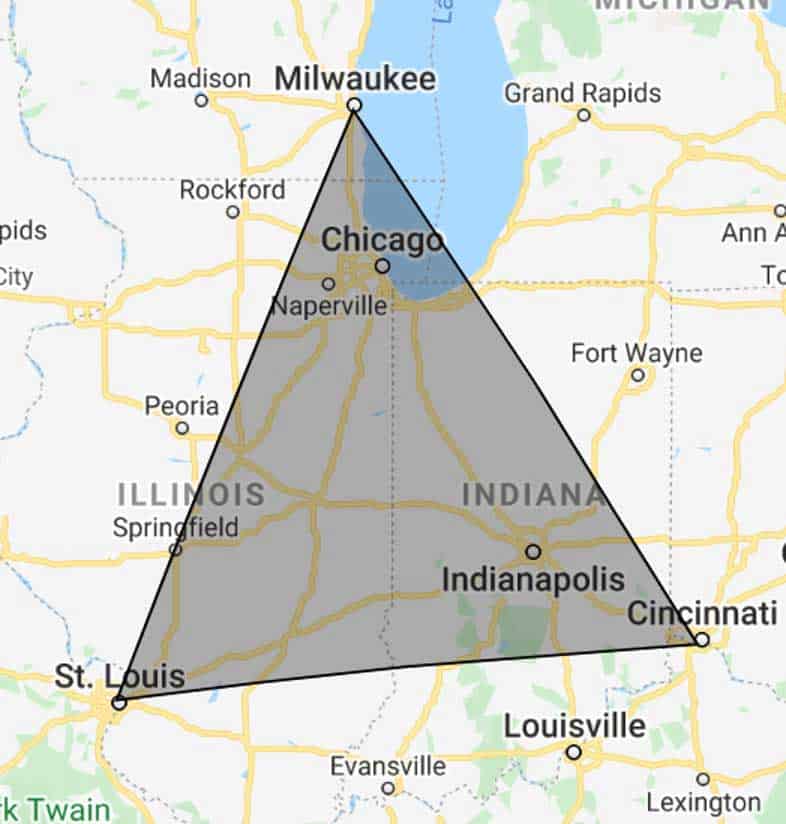
The so-called German Triangle, home to many German immigrants from the 1830s. Evansville, Ft. Wayne, and Louisville were also major sites of German settlement.
As a major city in this area, Indianapolis is home to the descendants of German-speaking Christians belonging to denominations that are theologically similar to English Methodism that were established in the early decades of the 19th Century, namely the former Evangelical Association and former Church of the United Brethren in Christ.
Research into these denominations can be very confusing, especially given the existence of other unrelated denominations of German heritage called “Evangelical Lutheran,” “Evangelical and Reformed,” and simply “Evangelical” – the latter two of which joined the United Church of Christ denomination and none of which are related to the descriptor of “evangelical” for certain nondenominational churches in the present-day.
To muddy the waters even further, there were German-language congregations of the Methodist Episcopal denomination.
All German-speaking denominations suffered greatly during the anti-German hysteria of World War One, with German institutions of all kinds shifting to more “American” practices, such as the use of English as their primary language.
Many schisms regarding belief and church governance occurred before the remaining majority groups merged in 1946 to form the Evangelical United Brethren (often shortened to “EUB”).
One such break involved native Hoosier and United Brethren Bishop Milton Wright, father of the Wright Brothers of aviation fame, who disagreed with the mainline Brethren stance regarding membership in Masonic groups.
These German congregations arose in neighborhoods where German-speaking people lived, with churches that easily compete in scale and beauty with their denominational rivals.

Former First German Evangelical (1883-2012)
The church, now The Cyrus Place events venue, is the “red brick church around the carner” mentioned by the Hoosier poet James Whitcomb Riley:
Last summer there was a lemonade stand under the trees at the house beyond the red brick church. Lemonade was three cents a glass. But there weren’t many buyers. The fingers of the small venders were not comfortably clean, and nobody knew if they washed the glasses. By and by it began to rain and four of them scuttled of to the shelter of the big church doorway, leaving only the littlest boy in charge. Along came the fine gentleman, and though he didn’t have an umbrella, he stopped in the fast increasing rain to say, “I’ll take a glass of lemonade.” And he drank it, too. Then he left ten cents and didn’t want the change. He never does. Every newsboy in Indianapolis knows that. Among the little folk he meets he scatters pennies as freely as the sunshine of his words.
Articles of union between the Evangelical United Brethren and Methodist Episcopal denominations were compiled and brought into force in 1968, forming the United Methodist Church. Most visitors to a United Methodist church today would likely find themselves unable to distinguish a former EUB congregation from a former ME congregation.
Calvary Evangelical United Brethren (1926-present)
University Heights Evangelical United Brethren (1931-present)
Former Belmont Avenue Evangelical United Brethren (1925-1994), currently Gethsemane Apostolic (2002-present)
Other Important History
For reasons best left to other writers, Indianapolis was the seat of the Ku Klux Klan during its second heyday of the 1910s and 1920s. DC Stephenson was the leader of the Indiana Klan during this period and lived in the eastern Indianapolis suburb of Irvington.
Stephenson’s 1925 conviction of the rape and murder of Madge Oberholtzer was one of the events that led to the group’s rapid fall from power.
After his imprisonment, Stephenson released the names of prominent Klan members, including several Methodist clergymen. Indianapolis was – and continues to be – a conservative city in a deeply conservative state.
The Klan was able to gain prominence by combining its vile white nationalist ideology with calls for socially conservative policies that were popular among preachers of most Protestant denominations, particularly alcohol prohibition, limits on immigration, and opposition to women’s suffrage, among others.
The modern United Methodist Church has disavowed this ideology and has begun working to ensure that they are a place of Gospel-centered social concern.
Throughout the years, countless people have prayed, sang, and gave praise to God within the confines of Methodist churches in Indianapolis, including:
Freeman Ransom (lawyer and civil rights activist, Bethel AME); Albert Beveridge (senator, Meridian Street Methodist); Charles Fairbanks (vice president, Meridian Street Methodist); Richard Lugar (senator, St Luke’s Methodist); Oliver P. Morton (Indiana governor and senator, Roberts Park Methodist); and Joe Hogsett (mayor, Roberts Park Methodist), among many others of all professions.
Current state of Methodism in Indy
According to current counts by the United Methodist Church, they are the most prolific single organization in the United States, with more than 32,000 outposts and at least one in every county in the country – more than even the United States Postal Service.
Unfortunately, current trends in church attendance have not left the UMC untouched, and hard decisions have been made regarding combinations and closures.
As of July 2020, there were 1019 individual congregations in the state, with 78 of those in the Indianapolis metro area. These fall under the jurisdiction of the Central District of the Indiana United Methodist Conference.
A theme we’ll see across many of the denominations is the role of LGBTQ+ people in leadership and church life. A global vote on the role of LGBTQ+ members in the United Methodist Church was held in 2019, with 53% voting for a “Traditionalist Plan” that would not affirm same-sex marriage within the denomination among other similar stances.
That bloc has subsequently announced plans to leave and form their own denomination. It is unknown how many Indianapolis congregations would follow the so-called traditionalists, but many UMC congregations in the city have taken active roles in welcoming and loving non-heteronormative people in their pews and advocating for them outside the walls of their churches.
Many congregations are active in Faith In Indiana, an interdenominational advocacy group that uses Gospel-centered approaches to immigration, gun control, and race relations.
Much has changed regarding the history of the Methodist church in the two centuries since Rev. Cravens’ first sermon in the budding city.
The population now hovers around one million and there are more Methodists today than people in the city for most of the 19th Century. Stay tuned for the next article in this series about Presbyterians and some very interesting and famous figures from the nation’s history.
Resources on Indiana Methodism:
United Methodist Church of Indiana
JP Dunn’s 1910 Greater Indianapolis contains a thorough history of various denominations in Indianapolis, including Methodism
Depauw University maintains the archives of the Indiana Methodist church. Indianapolis church information generally starts on page 556.
Discussion of Methodist church closings
A detailed history of Bethel AME
A full virtual scan of Bethel AME’s interior is available at the Virtual Bethel project website
Involvement of clergy in the Klan
Circle City Congregations
For more information about the early history of Indianapolis, please refer to my last article, which set the stage for how the city developed.
Read the first story
MEET THE AUTHOR
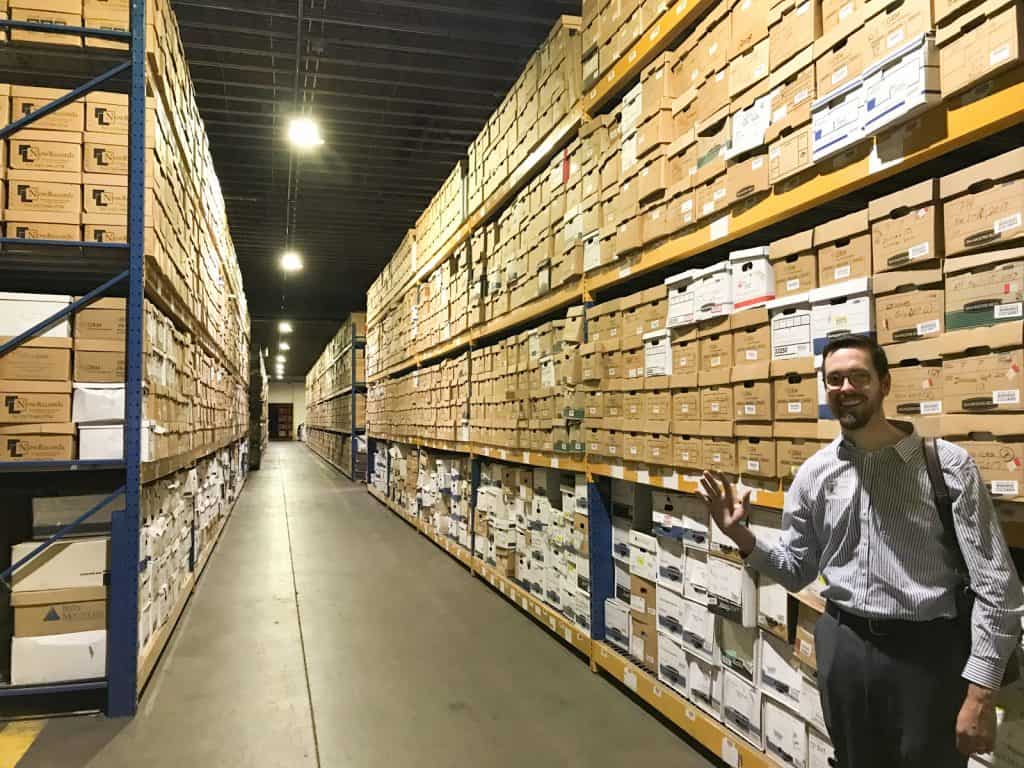
Lee R. Little
JD, MLS
Lee Little is the creator of Old Churches Indy, a project devoted to documenting and celebrating the rich religious heritage of Indianapolis. The focus of the project is primarily churches within Indy’s old city limits that were built prior to 1955 that still stand today.
Lee also serves as Historiographer of the Episcopal Diocese of Indianapolis, assisting the bishop and congregations preserve and tell the story of the Episcopalians in Indiana from its earliest days to the present.
You can find Lee on Instagram at Old Churches Indy. And, while you are here, please consider leaving a comment for Lee below in the Comment section.
Don’t miss the 3rd part of this series! Sign up for our Steeple Insider newsletter (below in footer), and we’ll let you know when Lee’s next installment is hot off the press!
More on churches and church history

Teresa Trumbly Lamsam, Ph.D., is an accomplished Social Scientist and Journalist. Passionate about establishing credibility in the digital realm, she champions transparent and trustworthy online content. She is dedicated to producing content that sparks curiosity and nourishes the heart and mind.


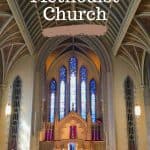
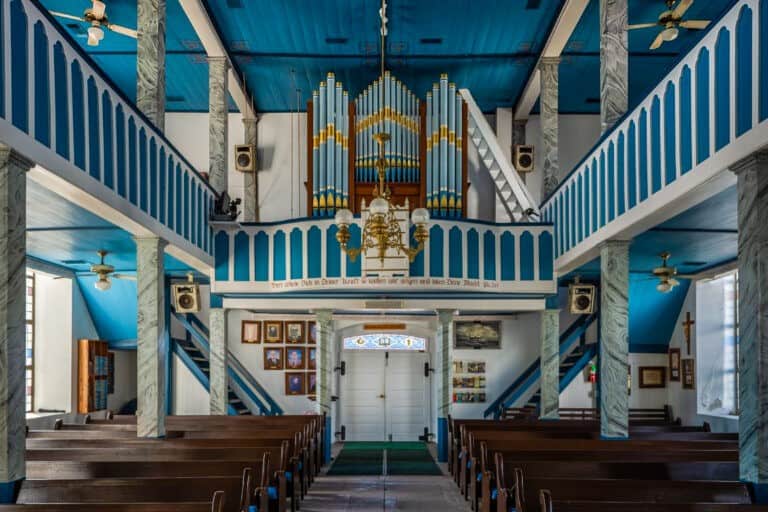

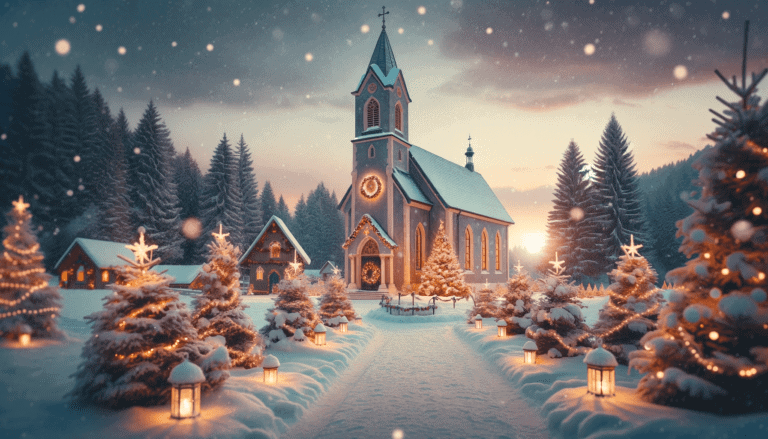


OMG! That was interesting!!!! I don’t live in your city, but I learned a lot. I never knew the CME was originally called “Colored Methodist Church.” Now, I’m curious about the history a bit more as to why they split. I know racism had a role. Your research was so intensive and I enjoyed reading.
I absolutely love history so imagine my delight when I came across your fabulous blog. I like how you focused on the church styles and the architecture.
Hi Ana, I’m so glad you liked the article. This has been a labor of love and I’ve learned so much – excited that you did too!
Lee
Thank you for sharing some history about the Methodist church. I found it very interesting. Blessings, Joni
Hi Teri, I’m so glad you liked the article.
The “C” was changed at the denomination’s general conference in 1955. Their website has a lot more information than I could ever fit into a single article (especially one that you’d want to read in one sitting!): https://thecmechurch.org/history/
Thanks for reading!
Lee
I enjoyed reading about the history of Methodist churches, how it started and how they grew – I had no idea there were so many!
Hi Dani, so glad you enjoyed the article.
From what I can tell, there is (or was) at least one Methodist church in every town in the country. The Wesleys got something very right in their emphasis on evangelism!
Lee
I really didn’t know anything about the Methodist church. But all of the pictures are really neat!
Hi Emily,
Glad you enjoyed the article. I’ve really enjoyed seeing all the different ways that they’ve built Methodist churches too – neat to see the variety!
Lee
Enjoyed this article. I was a member of the group from St Malachy in Brownsburg, Indiana who enjoyed the tour of Historic Catholic Churches which you lead a few years ago. I look forward to seeing more articles in the future.
Hi Margaret,
It’s good to hear from you again and I’m glad you enjoyed the article and tour! There will be one on the Catholic church in Indy at some point, likely before tours start up again.
Lee
This is so rich, I enjoy your posts so much. You and your guest writers always share such a wealth of knowledge and the most gorgeous pics. Thank you for your beautiful posts … ❤
Donna, we would love for you to contribute a church story too! Americana Steeples is driven by its readers. We want to start the dominoes falling with the history and stories from churches (buildings and people) all across the world!
I would love to visit these. I’m not a Methodist, but that doesn’t even matter, and that’s the interesting thing about churches. Everyone thinks they’re only about religion. Well, in a way, that’s true, but if you think about it, churches have seen some amazing things come and go and come again throughout the passage of history.
Hi Brianne, I’m glad you enjoyed the article and that it was thought-provoking for you. The most important thing is what’s inside the churches, but the buildings are a close second for me!
Lee
An interesting read about the history and background to this church. Alot of facts l didn’t even know. Thanks for your indepth post!
Hi Ava, so glad you enjoyed the article. There’s a lot to share and I had to leave a lot out! Come back for the next article.
Lee
I love visiting and seeing the architecture for all kinds of different denominations. I dig the ones that remind me of old ancient cathedrals from medieval times.
Hi Matt, glad you liked the article. The differences in architecture are truly fascinating, especially the subtle changes over time even within the same denomination. Keep an eye out for my upcoming articles about other denominations that will have more pics of ancient (by Indy standards) churches
Lee
Hi Lee! Thank you so much for writing such an in-depth post on the history of the Methodist Church. Thank you for including the Google Maps function and the gorgeous pictures!
Hi Adriana, I’m glad you enjoyed the article. The map is a nice touch, isn’t it?
Lee
You are such a deep thinker. I am continually impressed by your ideas and the way you put them out for us to read.
Hi Bright Snow, I’m glad you liked the article and I appreciate your kind words.
Lee
These all are great and historic churches that we could learn a lot from.
Hi Ashley,
They’re some of my favorites too. The best part about learning the history is that it provides great examples of what to do (and what not to do); that’s part of why I love the concept of the Communion of Saints – so many have gone before us.
Lee
Such a great and well written article about the history of the church. So much detail and information. I learned a lot. Thank you
Hi Jennifer, I’m glad you enjoyed the article. It was a lot of fun to write, so I’m glad that translated! Stay tuned for more articles that will hopefully be just as well written 🙂
Lee
fascinating post. it is interesting how you separate some of the churches based on ethnicity.
I’m glad you liked it! It is especially important today to not forget where we came from and why our current patterns exist; everything has a story and it’s vital we recognize that.
Lee
I’m not a church-goer because I don’t generally appreciate organized religion these days, but I think learning about history from churches is a valid perspective to have! Thanks for sharing these!
Hi Nkem, I’m glad you enjoyed the article. Church has meant so much to so many over time, and I echo some of your frustrations at the institutional churches. There is much work to be done, but that work is important. Stay tuned for more articles!
Lee
This is a really well-worked post and I know how long it takes and how much work you have to put in. Great job!
Hi Ann, thanks for the kind words; I’m glad you enjoyed the article. I hope I can keep it up in forthcoming ones!
Lee
Wow…that is quite lengthy for the Methodists! They must become all-welcoming or the marginalised break away and follow their hearts!
Hi Ntensibe, I hope the length wasn’t a negative. It’s hard to be a big enough tent for everyone, but they seem to be trying!
Lee
I love to visit churches I find they offer a view into our history
Hi Steven, I’m glad you enjoyed the article. It seems that we’re cut from the same cloth, so far as church history goes!
Lee
I’ve never heard of this Methodist Church before but that sounds quite interesting. I love learning about different histories of places and buildings.
Hi Lyanna, I’m glad you enjoyed the article. There’s so much to learn and explore, especially when it comes to religion. I’m not Methodist myself, but their website seems to have a lot of good information if you’re interested: https://www.umc.org/en
Lee
I love architecture and I love history. This is an amazing article! I knew the Methodist church had a widely varied past, but had not idea how much! And I love to hear the stories that people actually lived. It is an experience for me to picture them experiencing those things and seeing how it has changed life for us today.
Hi Marie, So glad you enjoyed the article! It’s neat to imagine how people from past generations lived and interacted with the world, and a bit strange to think that someday we will be looked upon with the same curiosity.
Lee
This is a nice read. The history of the Methodist church is interesting
Thanks, Paolo; I’m glad you enjoyed it. There’s a lot to sift through, that’s for sure!
Lee
We have some Methodist church in my country. I didn’t know it is popular in the US. Nice to know its history.
Hi Emman, I’m glad you enjoyed the article. The sheer size of the Methodist church in America is staggering, but given their methods it’s not surprising. Their group has been very influential.
Lee
wow, what great information. i really learned so much. very cool.
Hi Katrina, I’m glad you enjoyed the article. I learned a lot when writing it!
Lee
Wow! These are so incredible. I have no idea that they are so many methodist church. It is so interesting. Thank you for sharing.
Hi Chei, I’m glad you enjoyed the article. They certainly are one of the most prolific organizations I’ve ever come across, which says a lot about their beliefs and the way they spread them.
Lee
As a British Methodist Minister, I found your article about the history of the Methodist Church in Indiana very interesting. Having spent two of my sabbaticals in Pennsylvania ( Renovo and McConnellsburg), the references to the influence of German immigrants was very similar.
Hi Rev. Stanworth, I’m glad you enjoyed the article. There are, I’m sure, a large number of parallels between the UK and US history of your denomination. My favorite part of Methodism is the heavy emphasis on singing; a good hymn will stick to your bones a lot longer than even the best sermon.
Lee
There is some rich history outlined in this post. I have to travel to Indy this year. Will bookmark it to revisit.
Hi Shannon, I’m glad you enjoyed the article. While I’m glad you want to come visit, I’d wait until next year when more things will be open again. There’s a lot to explore here!
Lee
This was so interesting! I had no idea about most of this history and I LOVE reading the history behind things. Thanks so much for taking the time to write this!
Kari – We’re so excited to hear that you love reading history! Expect more and more articles like this!
This is such an interesting read. I had no idea how much history was behind the Methodist church. Thank you for sharing your knowledge!
Hi Collene, I’m glad you liked the article as much as I enjoyed writing it. There’s always more to dig into, especially with groups as complex as religious denominations.
Lee
Very interesting so much to digest. It really caught my eye on the German triangle.Will have to go back when have time to look at photos.
Hi Oscar, I’m glad you enjoyed the article! My first major area of historical research many years ago were the Germans in the Midwest, so it was a lot of fun to dig into them in this subset too.
Lee
What a fascinating article about the Methodist church. I attended & was married in a Methodist church in New Orleans. I thoroughly enjoyed learning the history and the current state of the denomination.
Hi Mary, I’m glad you enjoyed the article. The Methodists were prolific and it’s very interesting to see some of the regional variation. Keep your eyes peeled for my upcoming articles!
Lee
Some of those old churches are so pretty! Thanks for sharing this, I enjoyed reading about the history of the Methodist Church!
Hi Meghan, so glad you enjoyed the article! They certainly knew how to build an beautiful church, that’s for sure.
Lee
This is, honestly, an awesome list of churches to visit. I always love this type of post that organizes carefully the destinations so audience can follow easily. Thanks for the article!
Hi Khoingn, I’m glad you enjoyed the article! It’s been really interesting to research and visit each of these churches; I’ve seen so much of Indy doing so, including a lot of parts of town I’d never been to before!
Lee
Wow, thanks for giving us deep insight into the history of the Methodist church.
Hi Betty, there’s a lot to share and I’m glad you enjoyed the article. More to come on other denominations!
Lee
I love to see pictures of old churches. Learning the history is so interesting. Enjoyed your pictures.
Hi Gina, I’m glad you enjoyed the article. The pictures have been a lot of fun to take! So many interesting details to capture.
Lee
I love church history. The Methodist church provides a lot of good services to many communities. Thank you for sharing this history.
Hi Barbara, I’m glad you enjoyed the article. The need has always been there, so it’s very good to see groups like the Methodists step in and fulfill the Gospel mandate.
Lee
Thank you for your writing, I appreciate your style and find the history fascinating .
Hi Daniel, I’m so glad you enjoyed the article. It was a lot of fun to write, so I’m glad that translated to a good reading experience.
Lee
Thank you for sharing such detailed and historical facts about the Methodist church! Very informative and helpful to know.
Hi Tinashe, I’m glad you enjoyed the article! I enjoyed writing it and always enjoy learning more about fascinating topics.
Lee
The Methodist church has a rich history in the US. Many of the congregations have gotten pretty liberal over the decades, but that can be said of many denominations. I found it very interesting to see the photos of so many churches in Indianapolis. This article is a great resource for anyone wanting to know the history of the Methodist Church!
Hi Summer, glad you enjoyed the article. The change over time of religious groups is interesting, particularly as splinter groups have formed to fill perceived voids in theology. Say what you will about any particular religious group: they’re all intensely fascinating to research.
Lee
I love the church history that you bring to us. I didn’t know too much about the Methodist church. Thanks for sharing
Hi Elizabeth, So glad you enjoyed the article. I didn’t know much either until I started researching; luckily it’s so interesting!
Lee
Wow! What an informative article!! Thank you for sharing. I was unaware of so many facts!
Thank you for sharing all the beautiful pictures! I love to see the old church buildings.
This is so fascinating. In Arizona, we have no history of churches like this, at least as far as I know. I love how you were able to conjure up old photos and so many facts!
Hi Lee, I sure appreciate your historical content and the photographs. This is a unique blog style, and well-worth the read. There is so much to comment on, that I don’t think I’ll try that right now, but thank you for your research and reporter-style. Religious history does deserve a newsworthy place in modern lives!
Wow!! This is interesting historical information. I love learning about the backgrounds of churches.